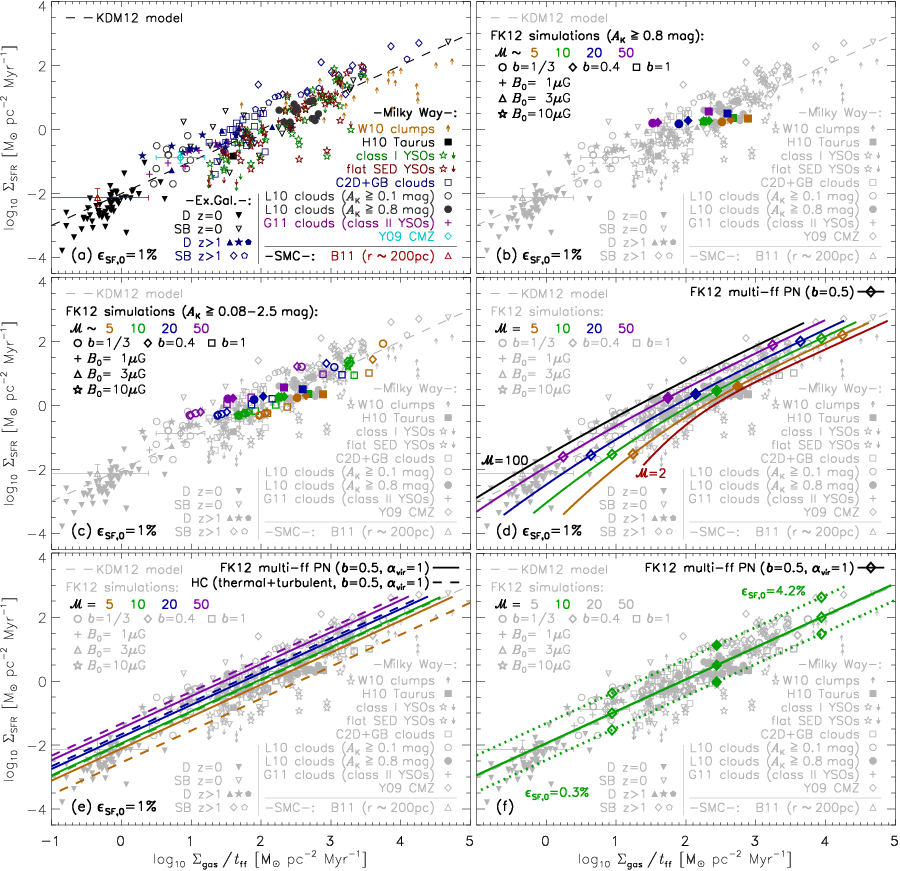
Contact Info
Australian National University
christoph.federrath@anu.edu.au
+61 (0)2 6125 0217
0000-0002-0706-2306
GitHub Bitbucket
Observations of external galaxies and of local star-forming clouds in the Milky Way have suggested a variety of star formation laws, i.e., simple direct relations between the column density of star formation (Sigma_SFR: the amount of gas forming stars per unit area and time) and the column density of available gas (Sigma_gas). Extending previous studies, we show that these different, sometimes contradictory relations for Milky Way clouds, nearby galaxies, and high-redshift disks and starbursts can be combined in one universal star formation law in which Sigma_SFR is about 1% of the local gas collapse rate, Sigma_gas/t_ff, but a significant scatter remains in this relation. Using computer simulations and theoretical models, we find that the observed scatter may be primarily controlled by physical variations in the Mach number of the turbulence and by differences in the star formation efficiency. Secondary variations can be induced by changes in the virial parameter, turbulent driving and magnetic field. The predictions of our models are testable with observations that constrain both the Mach number and the star formation efficiency in Milky Way clouds, external disk and starburst galaxies at low and high redshift. We also find that reduced telescope resolution does not strongly affect such measurements when Sigma_SFR is plotted against Sigma_gas/t_ff.

This figure shows a compilation of Milky Way and extra-galactic data for low- and high-redshift disk and starburst galaxies of the star-formation rate column density as a function of the gas surface density divided by the local freefall time (panel a). This form of the star formation law was introduced in Krumholz, Dekel & McKee (2012), but the remaining scatter over more than an order of magnitude in this relation remained largely unexplained. Here, we add simulation data by Federrath & Klessen (2012) covering a wide range of physical conditions for star formation (panels b and c). This comparison, in combination with a refined theoretical model of the star formation law (panels d-f), shows that a substantial fraction of the observed scatter in the star formation relation can be explained by physical variations of the star-forming cloud parameters, primarily the sonic Mach number (panels d and e) and the evolutionary stage, i.e., the star formation efficiency (panel f), with secondary contributions from variations in the virial parameter, the turbulence driving and magnetic-field intensity of star-forming molecular clouds.
The author acknowledges comments by Frederic Bournaud, Neal Evans, Ralf Klessen, Mark Krumholz, Chris McKee, Daniel Price and Florent Renaud. We thank the anonymous referee for a critical and careful reading, which improved the paper significantly. This work was supported by ARC grant DP110102191. The simulations were run at LRZ (pr32lo) and JSC (hhd20).